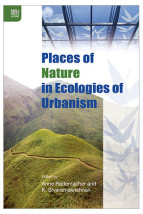Architecture and Urbanism in Modern Korea
(現代韓國的建築和城市規劃)
ISBN : 978-988-8208-02-9
May 2013
208 pages, 8″ x 10.5″, 120 color and 83 b&w illus.
For sale in Asia, Australia, and New Zealand only
- HK$350.00
Although modernization in Korea started more than a century later than in the West, it has been a prominent ideology throughout the past century—bringing radical changes to Korean architecture and cities. Traditional structures and ways of life have been thoroughly uprooted in modernity’s continuous negation of the past. This book presents a comprehensive overview of architectural development and urbanization in Korea within the broad framework of modernization.
Twentieth-century Korean architecture and cities have been forged by three distinctive periods. The first, defined as colonial modern, occurred prior to 1945, when Western civilization was transplanted to Korea via Japan, and a modern way of life, albeit distorted, began taking shape. Between 1961 and 1988 (the so-called developmental dictatorship period), the explosive growth of urban populations resulted in large-scale construction booms, and architects delved into modern identity through the locality of traditional architecture. The last period began in the mid- 1990s and may be defined as one of modernization settlement and a transition to globalization. With city populations leveling out, urbanization and architecture came to be viewed from new perspectives.
Inha Jung identifies continuities that have been formed by longstanding relationships between humans and their built environment and, despite rapid modernization, are still deeply rooted in the Korean way of life. In the twentieth century, regionalism exerted a great influence on Korean architects. Various architectural and urban principles that Koreans developed over a long period while adapting to the natural environment have provided important foundations for architects’ works. By exploring these sources, this carefully researched and amply illustrated book helps to define modern identity in Korea’s architecture, housing, and urbanism.
“Inha Jung has written a fine volume, full of very well informed accounts of events, insightful analyses of projects, and nuanced ideas about the unique flow of architectural and urban modernization in Korea. Jung is a mature scholar who delivers a well-balanced and original account that is both ambitious in scope and delivered in unencumbered and economical prose, with lavish documentation should one want to go further into particular aspects. It is a book that can easily be read and appreciated by people outside the field, in, say, cultural or Korean studies, as well as by those without disciplinary affiliation who are simply interested in Korea.” —Peter G. Rowe, Raymond Garbe Professor of Architecture and Urban Design, Harvard University


